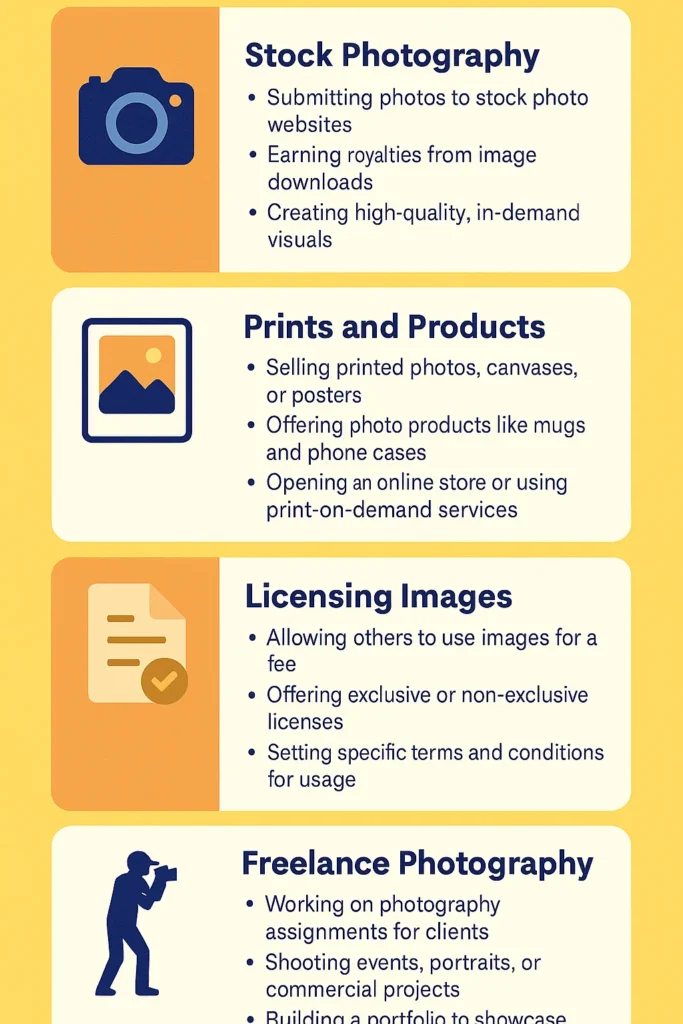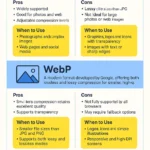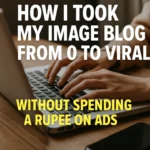
Top Image Monetization Strategies: From Stock Sites to Print on Demand (2025 Guide)
In 2025, images are no longer just things you upload to Instagram — they’ve become real assets. Whether you’re a photographer with a DSLR, an AI image creator experimenting with prompts, or just someone who knows how to make visuals pop, your work can earn you actual income.
I still remember uploading my first set of images to a stock photo site in 2022 — shaky lighting, mismatched themes — and getting zero downloads. But once I learned what buyers actually look for and how to present my images like a brand, things changed.
So whether you’re a beginner or an image entrepreneur, this guide will walk you through all the ways to turn your visuals into money, even while you sleep.
📸 1. Sell Your Images on Stock Photography Sites
One of the most popular — and surprisingly effective — ways to make money with images is stock photography.
When I first uploaded to Shutterstock, I wasn’t expecting much. But then one morning, I got an email: “Your image has been downloaded.” I earned just ₹18. But it was my first passive income, and it felt like a win.
Best platforms to try:
- Shutterstock – Great reach and intuitive contributor dashboard.
- Adobe Stock – Seamless if you use Lightroom or Photoshop.
- iStock (Getty Images) – Ideal for high-end editorial or business themes.
- Alamy – Pays better per image but requires stronger curation.
📌 Tip from my journey: Focus on real-life themes — working people, city life, festivals, healthcare. Think of what bloggers and ad agencies need daily.
💡 Even your smartphone shots can work! I sold a photo of a chai cup on a Delhi rooftop — turns out, lifestyle photos with authenticity sell better than over-polished studio shots.
🛍️ 2. Print on Demand: Turning Art into Products
My friend Anjali used to sketch floral patterns just for fun. Then she uploaded 10 of them to Redbubble — mugs, notebooks, t-shirts — and in 3 weeks, she got her first order from Canada. That moment convinced her: her art could travel the world.
Print on Demand (POD) lets you upload your artwork or photography and have it printed on real items — without you managing any stock, shipping, or returns.
Best POD platforms in 2025:
- Redbubble – A favorite for quirky or niche designs.
- Spring – Integrates well with TikTok and YouTube creators.
- Zazzle – Great for wedding invites, stationery, and gift items.
- Printful – Offers quality control and store integrations (Shopify/WooCommerce).
📌 What I learned: Don’t go generic. Go weirdly specific. Think “scuba-diving cat moms” instead of just “cute cats.” Niche sells.
🌐 3. License Your Photos to Bloggers & Content Creators
Last year, I stumbled upon a travel blog using one of my sunset beach shots — and they had credited me! Turns out, I had listed it on Creative Market as part of a “Golden Hour Landscapes” bundle, and someone actually bought and used it.
That’s the beauty of image licensing: instead of selling your photos as individual downloads on stock sites, you bundle them or sell them with custom licenses directly to other creators — bloggers, YouTubers, social media managers, or even eBook publishers.
Top platforms for licensing in 2025:
- Creative Market – Great for curated collections and thematic packs.
- Envato Elements – Subscription-based but good for earning from high-volume downloads.
- Gumroad – My favorite for selling packs like “Instagram Story Backgrounds” or “Bold Abstract Wallpapers.”
📦 Real-Life Tip: Bundle your visuals like a product — “20 Boho Wallpapers for Bloggers” or “10 Product Backgrounds for Etsy Sellers.” People buy packs more often than singles.
🎯 4. Build Your Own Image Store or Portfolio Website
Nothing beats the feeling of getting a direct PayPal notification for your own work — no middleman, no 30% platform cut. That’s what happened when I sold my first bundle directly from my website built on WordPress + Easy Digital Downloads.
Creating your own image store gives you full control: pricing, branding, user experience, licensing terms, everything.
Platforms I recommend:
- WordPress with EDD (Easy Digital Downloads) – flexible and powerful.
- Pixieset – Photographers love it for delivering client galleries + storefront.
- Shopify + Digital Product App – Great if you already have a merch store.
📌 Promotion Strategy: I use Pinterest and Instagram Reels to showcase behind-the-scenes of my photos and link to the store. Blogging with SEO helps too. One post titled “Free Neon Backgrounds for Designers” went viral and brought 2,000+ downloads in a week!
🤖 5. Use AI-Generated Images to Scale Content Creation
At first, I was skeptical of AI art. “How can an algorithm make better images than me?” But tools like Midjourney and Leonardo.ai changed the game. Within days, I was generating dozens of surreal, high-res images — and people loved them.
AI-generated images now form nearly 40% of my passive income. I use them for:
- Print-on-demand posters
- Digital wallpaper packs
- Backgrounds for YouTubers or presentations
But here’s the catch: check the license. Most AI platforms (like DALL·E, Midjourney) allow commercial use if the image is original and significantly modified. Always read the fine print.
🛑 Pro Warning: Some stock photo sites still don’t accept AI images, or they label them differently. Don’t get banned — label your files properly and disclose when asked.
💡 Tip from my workflow: I add a human twist to AI art — a bit of Photoshop clean-up, slight lighting changes, or text overlay — to make it unique and personal.
💼 6. Offer Image Editing & Customization Services
Back in 2023, a small travel agency messaged me on Instagram asking, “Can you edit our beach tour photo to make the sunset more vibrant?” It was a $25 gig, done in under 15 minutes. That one message turned into a recurring client.
That’s when I realized — not everyone wants new images. Many people just want their photos to look better.
If you’re skilled in:
- Photoshop or Lightroom
- Canva Pro or Figma
- Mobile apps like Snapseed or Pixlr
You can offer:
- Custom edits
- Social media packs (think Pinterest templates or Instagram carousels)
- YouTube thumbnails or cover banners
- Background removal or product image enhancement
Where to sell your services:
- Fiverr – Make a compelling gig title and visuals (they matter!)
- Upwork – Perfect for long-term freelance clients
- Your own site or Instagram DMs – Personal brand builds trust
🎁 Bonus Tip: Bundle your services. Example: “10 Canva Pinterest Pins + 5 Editable Templates” for bloggers.
🔐 7. Understand Licensing: Royalty-Free vs Rights-Managed
I once sold an image of a camel in Rajasthan through Alamy — and it earned me more than 15 Shutterstock downloads combined. Why? Because it was rights-managed — meaning it was licensed for a specific use, time, and territory.
Let’s break it down:
| License Type | What it Means | Example |
|---|---|---|
| Royalty-Free | One-time payment, multiple uses | Blog post, ads, website |
| Rights-Managed | Restricted by duration, region, or format | Magazine cover for 6 months in India |
📌 Important: Platforms like Getty, Alamy, and 500px Prime allow rights-managed licensing. If your image is unique — like editorial shots, rare travel scenes, or emotional portraits — go for this. Higher payouts, fewer buyers, but better ROI.
🏆 Final Thoughts: Choose the Path That Works for YOU
When I started, I thought image monetization meant uploading to Shutterstock and hoping for the best. But the real growth came when I mixed strategies:
- Used AI art tools to scale quickly
- Built a small website to license my digital packs
- Offered edits to clients through Fiverr
- Dabbled in print-on-demand with niche quotes and designs
In 2025, there’s no “one-size-fits-all” image monetization path. It’s about understanding your strengths and combining platforms smartly.
🚀 Want a Quick Start Plan?
Here’s what I recommend:
✅ Upload 20 images to Shutterstock + Adobe Stock
👕 Create 5 niche designs on Redbubble
🎨 Experiment with AI tools like Midjourney or DALL·E
🖼️ Bundle 15 backgrounds and list on Creative Market or Gumroad
📲 Promote on Pinterest, Instagram, or SEO blog posts
💸 Offer editing services on Fiverr (easy entry, huge demand)
💬 Conclusion: Turn Pixels into Passive Income
Your camera, your creativity, your AI prompts — they’re more valuable than ever. You don’t need to be a full-time designer to make money with images. All it takes is some experimentation, consistency, and understanding what people actually need.
The digital economy is booming. Why shouldn’t you be a part of it?

